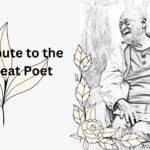“The abstraction is often the most definite form for the intangible thing in myself that I can clarify in paint.” – Georgia O’Keeffe.
As I delve deeper into the exploration of defining the raga, a fresh perspective emerges. Each term carries its unique significance when it comes to the concept of raga. In this instance, the word ‘abstract’ takes on a different connotation. Raga, as mentioned in the last two chapters, is indeed an abstract and intricate concept. At its core, Raga is a complex melodic framework that serves as the foundation for improvisation and composition in Indian classical music. Raga is an abstract musical concept that blends technicality, emotion, culture, and individual interpretation into a unique melodic framework. It is a canvas upon which musicians paint their musical expressions, and it invites listeners to explore the profound depths of human emotions and creativity. This abstract quality is what makes Ragas a captivating and enduring element of Indian classical music.
There are various explanations of why Ragas are considered abstract. While Ragas are deeply rooted in a set of musical rules and principles, they are not easily defined in technical terms alone. Unlike Western music scales, which are specified by a fixed sequence of notes, a Raga is defined by a unique combination of notes, specific melodic phrases, ornamentations, and a mood or emotional quality. This abstract nature allows for a wide range of creative interpretations. Ragas are often associated with specific emotions, moods, or atmospheres. Some Ragas may convey a sense of serenity and contemplation, while others evoke feelings of joy or longing. These emotional associations are abstract in nature, as they transcend precise definitions and are open to individual interpretation.
The abstract nature of a Raga also extends to the listener’s experience. Each listener may perceive and connect with a Raga differently, depending on their personal experiences, emotions, and cultural background. This subjectivity adds further abstraction to the Raga.

It might be familiar to readers; however, defining the word “Abstraction” is contextual here. Abstraction is a fundamental concept that involves simplifying complex systems, objects, or ideas by focusing on the essential aspects while ignoring irrelevant details. It is a process of creating a high-level representation or model that captures the key features, characteristics, or behaviours of something without delving into its intricate specifics.
Abstract music, also known as abstract or non-representational music, is a genre of music that does not attempt to convey specific emotions, tell a story, or represent concrete objects, scenes, or ideas through its musical elements. Instead, abstract music focuses on the intrinsic qualities of sound, such as pitch, rhythm, texture, and timbre, often pushing the boundaries of traditional musical conventions. Abstract music prioritizes the raw elements of sound itself. It may explore the nuances of individual musical tones, the interplay of various instruments or electronic sounds, and the sonic qualities of the environment. That’s what characterizes the raga. Unlike programmatic music or music with lyrics that tell a story or convey a specific message, abstract music doesn’t have a predefined narrative or subject matter. It doesn’t aim to represent external ideas or imagery. Although there are lyrics in Indian Vocal rendition, the exposition of the raga really doesn’t rely on the lyrics. Raga music is highly structured and adheres to a set of rules and principles, but it also allows for a great deal of improvisation and individual expression within those constraints. Abstraction plays a crucial role in this context. Abstraction in Raga music allows individual musicians to interpret and express the raga in their own unique way. While there are established guidelines for each raga, the personal touch and improvisational skills of the performer play a significant role in how the raga is presented.
Instrumental music is a genre of music that is characterized by the absence of lyrics or vocalization. It is “abstract music” because it primarily relies on musical instruments to convey its artistic expression and emotional content. Unlike vocal music, which features lyrics sung by a vocalist, instrumental music is purely instrumental, meaning it does not have any vocal elements. This absence of lyrics allows instrumental music to communicate emotions, moods, and ideas solely through musical elements. One of the key characteristics of instrumental music as abstract music is its ability to be open to interpretation. Since there are no lyrics to provide specific meaning, listeners often project their own emotions, thoughts, and experiences onto the music. This ambiguity allows instrumental music to be highly subjective, with each listener deriving their own personal meaning from the composition.When a sitar is played instrumentally, there are no lyrics or vocals involved. Instead, the musician relies on the strings, finger techniques, and intricate ornamentation to convey the intended emotions and musical themes. Like all instrumental music, sitar compositions are open to interpretation. Listeners can immerse themselves in the intricate melodies and rhythms, allowing the music to evoke personal emotions and imagery. The sitar’s expressive capabilities make it particularly adept at conveying moods and atmospheres.
Not just the performer, abstract music tends to be open to interpretation, allowing listeners to derive their own meanings, emotions, or responses from the pure sonic experience. Each listener may have a unique and personal reaction to the music. The audience’s response, mood, and energy can influence the direction and intensity of the performance. Musicians often gauge the audience’s reactions and adapt their interpretation accordingly, creating a dynamic and interactive experience. Interpretation in music performance is a complex and nuanced process that involves various levels of analysis and artistic expression. Musicians interpret a piece of music to bring their unique perspective and emotion to the performance. It is highly subjective. It reflects the individual musician’s feelings, emotions, and understanding of the music. This subjectivity is what makes each performance unique and allows musicians to put their personal stamp on a piece.







